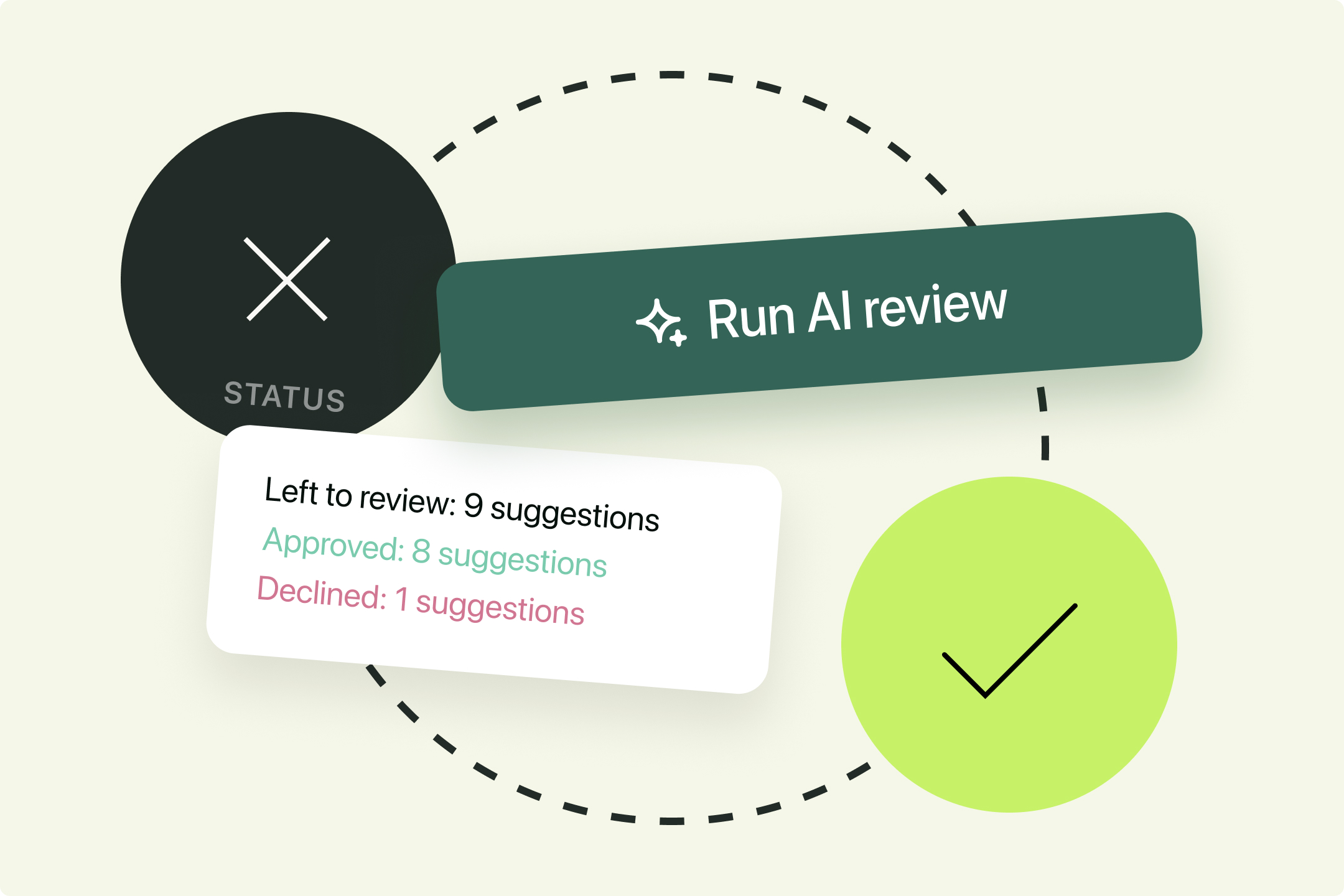Solutions
Customer Support
Resources
Contract addendums are a quick and easy way to build upon an existing contract. But what is an addendum to a contract, and when should you actually use one? Read on to find out.
An addendum to a contract is a separate legal document that modifies or adds to the terms of an existing, executed contract. Contract addendums are an effective way to include something new into an existing contract without having to scrap the original version.
This means that contract addendums typically save legal and business teams time and resources since drafting the contract from scratch again is often unnecessary. Instead, parties can simply include the terms they wish to add to the existing contract on a shorter, more concise legal document.
Contract addendums can often be confused with contract amendments since both seek to update the original contract. However, addendums and amendments are both created in different ways and used for different purposes. Let’s cover that next.

The main difference between a contract addendum and a contract amendment is that an addendum is a separate document used to add or clarify terms that weren’t covered in the initial agreement. Contract amendments, on the other hand, are changes made to the contents of the original contract.
Imagine you realize that you had miscalculated the original contract’s duration and you now want to change the contract’s end date. The most efficient way to do this is to simply amend the contract you had originally created to reflect the small change.
Another way to understand the difference between an addendum and an amendment is to think of contract addendums as supplemental contracts. They can be used to add any information that the original contract didn’t include. Meanwhile, contract amendments are used to alter the information already covered within the original contract, not add to it.
We touched upon the differences between an addendum and an amendment earlier, but it’s also important to understand when a contract addendum should be used, and for what purposes. The best way to do this is to look at some examples.
Contract addendums are often used to update employment contracts. More specifically, an employer might use a contract addendum to update an employee’s responsibilities or pay, for example.
A contract addendum will reflect these newly agreed terms in a separate document without invalidating the original agreement. This is also known as an employment contract amendment.

A contract addendum could also be used to add more detail to an original agreement. Imagine that you’re entering into a contract with a manufacturer for the production of certain goods.
What would happen if the specification for the goods wasn’t described in the original contract? Would you need to terminate the contract and write a new one? No. You could describe the specification for these goods within an addendum instead.
Addendums can also be used for wills. If someone decides to change certain parts of their will but not all of it, they can create an addendum outlining these changes. This prevents them from needing to rewrite their will from scratch, which can be unnecessary.
"Contract addendums can be used to achieve a lot of things, from providing more clarity to an existing agreement to updating it when circumstances change"
A contract addendum is capable of being legally binding and fully enforceable so long as it meets the typical requirements of a contract. This means that the parties must have contractual capacity, provide consideration, and so on.
It also needs to be signed by all parties to the original contract. This means that an addendum to a contract won’t become enforceable unless all parties fully understand and agree to the new terms.
To recap: we’ve explored what an addendum is and when to use one. What we haven’t covered is how to actually create one. Let’s do that now.
It sounds obvious, but before you create a contract addendum, you first need to understand what you want it to say. This means discussing with the counterparties what the proposed change will be and what it will look like on paper.
Next, you’ll want to draft the addendum. This should include:
To speed up the process of creating an addendum, you may even want to use a contract template. This removes the need to draft the addendum from scratch.
Juro’s all-in-one automation platform enables users to create automated contract templates for addendums and populate these in seconds using a simple Q&A workflow, or by pulling contract data in from your CRMs and HR systems using an integration. This is perfect for HR teams that need to modify HR contracts at scale, for example.

Even if all parties to a contract addendum agree that the original contract needs updating, there might still be some debate over what the updated terms should be. This means that parties may want to negotiate the agreement.
This contract negotiation typically happens by sharing a version of the drafted addendum via email, where the counterparties will download it and push it back to Word to add redlines. A redlined copy is then saved once again and sent back to the contract owner through email where they will respond with their own edits.
This process will be repeated until all parties are satisfied with the addendum’s final state. As a result, negotiating contract addendums can be time-consuming and become a drain on legal’s time due to the amount of administrative work involved.
Fortunately, there’s a more efficient way to negotiate contract addendums. An all-in-one contract automation tool like Juro enables parties to collaborate on contracts without needing to move between platforms.
Juro empowers legal and business teams to work within the same document, redline contracts automatically, tag users in comments, and track all changes with a detailed audit trail.

Once fully negotiated, each party needs to sign the contract addendum. The traditional way to do this was to use a wet ink signature on a physical document. However, most businesses opt for a more convenient way of signing contracts today and use electronic signatures instead.
Whichever way you choose, it’s important that every party to the original contract also signs the addendum to that contract. Otherwise, it won’t be legally binding.
Due to the amount of contract admin work involved, managing contract addendums can be time-consuming for legal and business teams. But it doesn’t have to be this way.
Juro is the all-in-one contract automation platform that enables all teams to streamline the creation, execution and management of routine contracts (including addendums) at scale. To find out more and speak to a specialist, fill in the form below.
Any party to a contract can draft a contract addendum. However, all parties to the original contract must sign the addendum before it becomes legally binding.
No. A contract addendum is different from a contract amendment since an addendum is a separate document used to add to an existing contract. An amendment will make changes to the original contract itself.
Lorem ipsum dolor sit amet, consectetur adipiscing elit. Suspendisse varius enim in eros elementum tristique. Duis cursus, mi quis viverra ornare, eros dolor interdum nulla, ut commodo diam libero vitae erat. Aenean faucibus nibh et justo cursus id rutrum lorem imperdiet. Nunc ut sem vitae risus tristique posuere.

